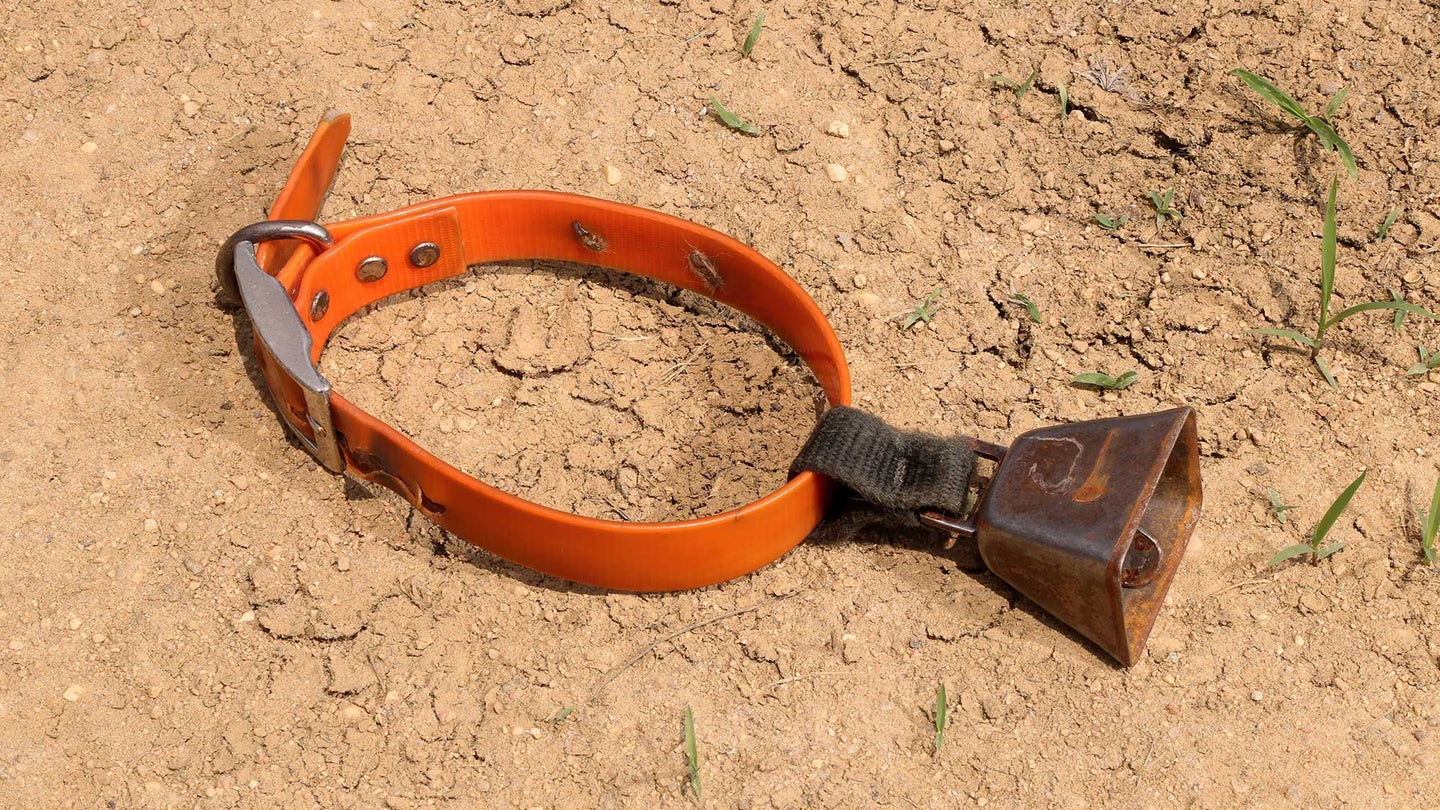We may earn revenue from the products available on this page and participate in affiliate programs. Learn more ›
THE SCENT OF SKUNK didn’t come off the bell for days, but that happens when your dog takes two close-range blasts in the face. Sam was wearing the bell on the morning my wife, Pam, first came hunting with me. When it fell silent, we found Sam on point at the end of a waterway in a spot that often held a rooster.
“Watch this,” I said, stepping forward to kick the grass in front of Sam’s nose. Instead of an explosion of wingbeats, a black-and-white tail curled up out of the grass. “Sam, no skunks,” I said weakly. It was not a command we’d worked on. Sam lunged. The skunk sprayed. I heard my wife say, “I’ll be in the house,” and she hasn’t gone hunting with me since.
Eventually the stench came off the bell, and I put it back on Sam’s collar. It had been a leftover from our failed attempt, as newlyweds, to raise sheep, and after I sewed a piece of nylon strap into a loop so it could slide over a dog collar, the bell fit my new direction in life as an outdoor writer. Worn around my first pointing dog’s neck, it had a pleasant tone, just low enough not to qualify as a tinkle, and it helped me keep track of Sam most of the time.
Like all bells, however, it would clog with snow, and even when it was working, it would go silent at the very moment I most needed to find my dog—when he was on point. Once while searching for Sam, who was locked on a bird in 6-foot-tall switchgrass, and with no ringing sound to guide me, I stepped on him with both feet before looking down to see him peering back up as if to ask, “Why are you standing on me?”
I tried a beeper collar. Back then, beepers were positively Soviet-looking. Made of white PVC pipe, Sam’s beeper was the size of a beer can and would drain the power from a set of batteries in an afternoon while making the sound of a truck backing up. It did help me find Sam on point, but I hated it, so Sam wore the bell for most of our eight seasons together. My setter, Ike, wore it for the next 14 seasons. Tall and elegant and yet a little goofy, Ike hunted with such obvious joy that the bell sounded like a celebration when he ran. When Ike went on point, crouched with a low tail the old-fashioned way, the bell on his collar completed the picture the way an electronic beeper never could.
Ike’s bell passed to Jed, who at first could rarely hunt without bleeding. In addition to whatever other scrapes he always picked up, he’d end the day with matching bloody raw spots on the back of his wrists—if dogs have wrists. When I realized something in Jed’s gait caused his paws to rub against the bell, I retired it. Beepers had improved since Sam’s day. They still made an obnoxious noise, and I still had trouble telling which direction the sound was coming from, but Jed could wear them without bleeding.
When I got a GPS collar, my hunting life changed for the better forever. I can now hunt without making a racket, as it only vibrates when the dog is on point. A glance at the transmitter shows me an arrow to follow and the distance to my dog. It helped me find Jed, and now it helps me find Zeke, no matter how tall the switchgrass.
I still keep the bell, though. Zeke has worn it on the very few occasions I have had technical difficulties with the GPS, but I will never go back to a bell unless the satellites fall from the sky. If that happens, I’ll have bigger problems than finding my dog on point. In the meantime, I keep the bell in my bird-hunting bag just in case, and to help me remember the dogs that have worn it.
Read more F&S+ stories.
